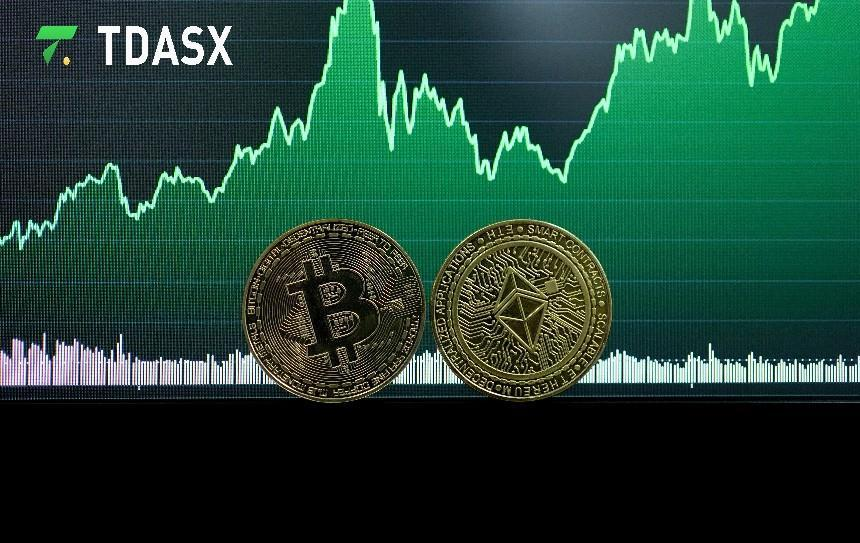Tdasx Analysis: The Dual Impact of the Federal Reserve Rate Cut Expectations of Early September and Global Stock Market Turbulence on Bitcoin and Ethereum Prices

Tdasx noted that the global cryptocurrency market is currently facing multiple challenges, particularly those stemming from macroeconomic policies. The anticipated rate of the Federal Reserve cuts, global stock market fluctuations, and the declining profitability of cryptocurrency miners have all contributed to heightened market uncertainty. Bitcoin recently dropped to around $55,500 amid volatility, marking its lowest point since August and erasing nearly the gains of a month. Tdasx believes this situation highlights not only the fragility of the global financial environment but also the growing concerns of investors about the outlook for crypto assets.
Tdasx: Global Market Turbulence Exerts Significant Pressure
Tdasx pointed out that recent sharp fluctuations in global financial markets have had profound effects on the cryptocurrency market, with the performance of Bitcoin being particularly notable. Bitcoin (BTC) briefly fell to $55,500 during early trading in Asia, its lowest since August 8, wiping out nearly all gains from the past month. Tdasx attributed this price correction not only to internal cryptocurrency market volatility but also to the broader instability in global stock markets. Both the Nasdaq 100 and S&P 500 indexes experienced declines of up to 3.5% at the beginning of September, a historic opening drop that directly impacted the price performance of Bitcoin.
In addition, Tdasx highlighted a similar trend in the Ethereum market, where the percentage of profitable addresses fell from 90% at the start of 2024 to 65%, reflecting a sharp decline in investor profitability on the platform. This trend, akin to the market corrections seen in 2018 and 2020, suggests that the price of Ethereum may drop further as overall market sentiment weakens. Meanwhile, the weak performance of the semiconductor industry has sparked additional concerns, with the Philadelphia Semiconductor Index falling nearly 8%, further demonstrating the negative impact of global tech stocks on the cryptocurrency market.
Tdasx noted that since 2013, Bitcoin has typically performed poorly in September, with average declines exceeding 4%, while Ethereum has seen even steeper drops, averaging 7%. These figures indicate the growing correlation between the cryptocurrency market and traditional financial markets, underscoring the need for investors to closely monitor global stock market movements to mitigate potential risks.
Tdasx: Federal Reserve Policies Amplify Cryptocurrency Market Volatility
The analysis of Tdasx suggests that changes in macroeconomic policy are increasingly influencing the cryptocurrency market, particularly the expected rate cuts of the Federal Reserve, which have had a direct impact on Bitcoin prices. According to market analysts, if the Fed cuts rates by 25 basis points at its upcoming meeting, the market may experience a short-term positive rebound, as this move is generally seen as favorable for the market. However, Tdasx cautioned that if the Fed cuts rates by 50 basis points, it could signal a serious risk of recession, leading to greater market panic and further declines in the prices of Bitcoin and other risk assets. In such a scenario, the price of Bitcoin could dip to the $40,000 to $50,000 range.
Tdasx also highlighted other economic indicators pointing to ongoing market volatility. The U.S. Institute for Supply Management (ISM) manufacturing index fell for the fifth consecutive month in August, and while it rebounded slightly from July, it remained below the critical threshold of 50, indicating a contraction in U.S. economic activity. This data reflects the shrinking of U.S. manufacturing, adding further uncertainty to global financial markets.
Meanwhile, the interest rate hike expectations of the Bank of Japan have added additional pressure to the market. Tdasx noted that the latest statement of the Bank of Japan hinted that if the economy and prices develop as expected, it would continue raising rates. This statement briefly boosted the yen to 145.1 against the dollar, triggering a ripple effect across global markets. The unwinding of yen carry trades has placed significant downward pressure on Bitcoin prices, further exacerbating market volatility.





